-
 Bitcoin
Bitcoin $108,614.0915
-2.46% -
 Ethereum
Ethereum $2,556.2591
-3.11% -
 Tether USDt
Tether USDt $1.0002
0.02% -
 XRP
XRP $2.3433
-3.28% -
 BNB
BNB $665.7422
-2.25% -
 Solana
Solana $178.9449
0.57% -
 USDC
USDC $0.9997
-0.01% -
 Dogecoin
Dogecoin $0.2330
-2.66% -
 Cardano
Cardano $0.7737
-3.54% -
 TRON
TRON $0.2713
-1.63% -
 Sui
Sui $3.7131
-3.94% -
 Hyperliquid
Hyperliquid $34.4206
4.86% -
 Chainlink
Chainlink $16.0468
-3.68% -
 Avalanche
Avalanche $24.0160
-4.34% -
 Stellar
Stellar $0.2929
-3.31% -
 Bitcoin Cash
Bitcoin Cash $439.3958
0.71% -
 Shiba Inu
Shiba Inu $0.0...01472
-3.27% -
 Hedera
Hedera $0.1966
-4.10% -
 UNUS SED LEO
UNUS SED LEO $8.7848
-0.94% -
 Toncoin
Toncoin $3.0612
-3.00% -
 Litecoin
Litecoin $98.6569
-1.15% -
 Polkadot
Polkadot $4.6937
-4.29% -
 Monero
Monero $401.6716
0.76% -
 Bitget Token
Bitget Token $5.5928
7.70% -
 Pepe
Pepe $0.0...01482
3.90% -
 Pi
Pi $0.7725
-5.45% -
 Dai
Dai $1.0000
0.00% -
 Ethena USDe
Ethena USDe $1.0006
0.01% -
 Aave
Aave $260.9113
1.79% -
 Uniswap
Uniswap $6.1579
-3.56%
How to use OBV and KDJ indicators together? How to judge the overbought and oversold areas?
Using OBV and KDJ together helps traders confirm trends, identify reversals, and pinpoint entry/exit points in the crypto market for better trading decisions.
May 23, 2025 at 10:42 pm
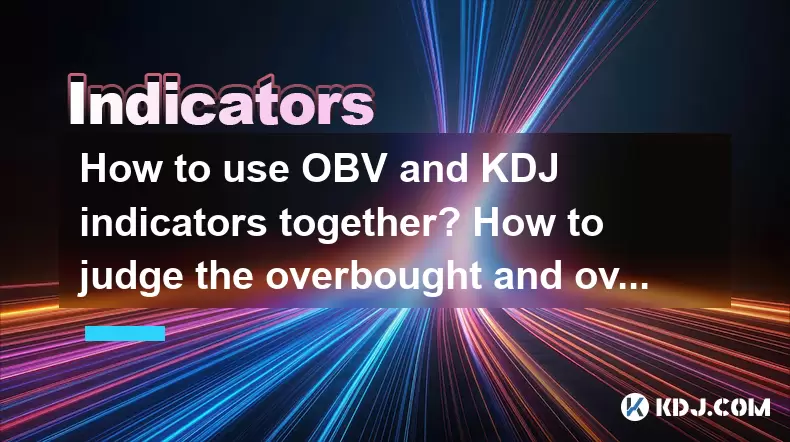
Using the On-Balance Volume (OBV) and the KDJ indicator together can provide traders with a robust method for analyzing market trends and making informed trading decisions in the cryptocurrency market. Each indicator offers unique insights into market conditions, and when combined, they can enhance the accuracy of identifying potential entry and exit points. In this article, we will explore how to use these indicators in tandem and how to determine overbought and oversold areas effectively.
Understanding the OBV Indicator
The On-Balance Volume (OBV) indicator is a momentum indicator that relates volume to price change. It helps traders understand the strength of a trend by accumulating volume on up days and subtracting volume on down days. The premise behind OBV is that volume precedes price movement, making it a valuable tool for confirming trends.
- Calculation of OBV: If the closing price today is higher than yesterday, the volume for today is added to the OBV. If the closing price is lower, the volume is subtracted. If the closing prices are the same, the OBV remains unchanged.
- Interpreting OBV: An increasing OBV suggests bullish momentum, while a decreasing OBV indicates bearish momentum. Divergence between the OBV and the price can signal potential reversals.
Understanding the KDJ Indicator
The KDJ indicator is a technical indicator used to gauge the momentum of a security's price. It is derived from the Stochastic Oscillator and includes three lines: K, D, and J. The KDJ indicator helps traders identify overbought and oversold conditions as well as potential trend reversals.
- Components of KDJ: The K line represents the fastest line, the D line is a moving average of the K line, and the J line is calculated as ( J = 3D - 2K ). The values typically range from 0 to 100.
- Interpreting KDJ: When the K line crosses above the D line, it may signal a buying opportunity, and when it crosses below, it may suggest a selling opportunity. Values above 80 indicate overbought conditions, while values below 20 suggest oversold conditions.
Combining OBV and KDJ Indicators
Using OBV and KDJ together can provide a more comprehensive view of the market. Here’s how to integrate these indicators for effective trading:
- Confirming Trends: Use the OBV to confirm the strength of a trend identified by the KDJ. If the KDJ suggests a bullish trend and the OBV is also rising, this strengthens the case for a bullish position.
- Identifying Reversals: Look for divergences between the OBV and the price, and use the KDJ to confirm potential reversals. If the OBV is diverging from the price and the KDJ is showing overbought or oversold conditions, it may indicate a potential reversal.
- Entry and Exit Points: Use the KDJ to identify entry and exit points, and use the OBV to confirm these signals. For instance, if the KDJ indicates an overbought condition and the OBV is declining, it may be a good time to consider selling.
Judging Overbought and Oversold Areas
Identifying overbought and oversold areas is crucial for making timely trading decisions. Here’s how to use OBV and KDJ to determine these conditions:
- Using KDJ: The KDJ indicator is particularly useful for identifying overbought and oversold areas. When the KDJ lines are above 80, the market is considered overbought, suggesting a potential sell signal. Conversely, when the lines are below 20, the market is considered oversold, indicating a potential buy signal.
- Confirming with OBV: To increase the reliability of these signals, confirm them with the OBV. If the KDJ indicates an overbought condition and the OBV is also showing a decline, it strengthens the sell signal. Similarly, if the KDJ shows an oversold condition and the OBV is rising, it supports the buy signal.
Practical Application in Cryptocurrency Trading
To apply these indicators in real-world trading scenarios, follow these steps:
- Choose a Cryptocurrency: Select the cryptocurrency you want to trade. Popular options include Bitcoin, Ethereum, and other altcoins.
- Set Up Indicators: Add the OBV and KDJ indicators to your trading chart. Most trading platforms allow you to customize and add these indicators easily.
- Analyze the Chart: Monitor the OBV and KDJ indicators simultaneously. Look for trends, divergences, and overbought/oversold conditions.
- Make Trading Decisions: Based on the signals from both indicators, decide whether to buy, sell, or hold your position. Always consider other factors such as market news and overall market sentiment.
Example of Using OBV and KDJ in a Trading Scenario
Let’s consider a hypothetical scenario where you are trading Bitcoin:
- Observation: You notice that the KDJ lines are above 80, indicating an overbought condition. At the same time, the OBV is showing a decline, suggesting weakening bullish momentum.
- Decision: Based on these signals, you decide to sell your Bitcoin holdings to lock in profits before a potential price drop.
- Execution: You execute the sell order on your trading platform, ensuring you follow all necessary steps to complete the transaction.
FAQs
Q: Can OBV and KDJ be used for all types of cryptocurrencies?
A: Yes, OBV and KDJ can be applied to any cryptocurrency. However, the effectiveness may vary depending on the liquidity and trading volume of the specific cryptocurrency.
Q: How often should I check the OBV and KDJ indicators?
A: The frequency of checking these indicators depends on your trading strategy. For short-term trading, you might check them multiple times a day, while for long-term investing, weekly or monthly checks might suffice.
Q: Are there any other indicators that work well with OBV and KDJ?
A: Yes, other indicators such as the Moving Average Convergence Divergence (MACD) and the Relative Strength Index (RSI) can complement OBV and KDJ, providing additional insights into market trends and momentum.
Q: Can these indicators be used in automated trading systems?
A: Yes, OBV and KDJ can be integrated into automated trading systems. Many trading platforms offer the ability to set up custom indicators and trading algorithms based on these indicators.
Disclaimer:info@kdj.com
The information provided is not trading advice. kdj.com does not assume any responsibility for any investments made based on the information provided in this article. Cryptocurrencies are highly volatile and it is highly recommended that you invest with caution after thorough research!
If you believe that the content used on this website infringes your copyright, please contact us immediately (info@kdj.com) and we will delete it promptly.
- Nimanode Launches as the First Full-Scale Platform for Building, Deploying, and Monetizing AI Agents on the XRP Ledger
- 2025-05-24 04:10:15
- The Trust Gap Between Web3 and Traditional Finance
- 2025-05-24 04:10:15
- Bitcoin and Ethereum ETFs registered more than a billion in net inflows, the highest level since November 2024.
- 2025-05-24 04:05:14
- Artificial Superintelligence Alliance (FET) Price Surges 16% on Increased Trading Volume
- 2025-05-24 04:05:14
- Unilabs (UNIL) Altcoin Is Now in Its Second Presale Phase and Has Already Provided Early Buyers with a 30% Return
- 2025-05-24 04:00:49
- How to Earn Bitcoin Without Needing Expensive Equipment or Deep Technical Knowledge?
- 2025-05-24 04:00:49
Related knowledge
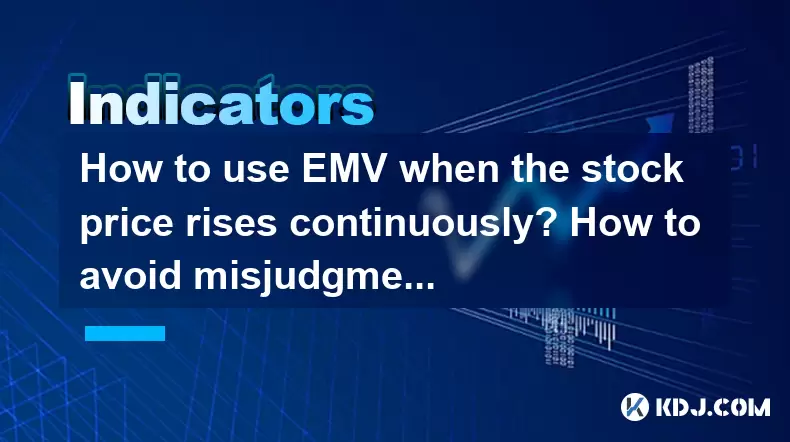
How to use EMV when the stock price rises continuously? How to avoid misjudgment in extreme market conditions?
May 23,2025 at 07:29pm
In the dynamic world of cryptocurrency trading, the Exponential Moving Average (EMA) is a powerful tool that traders use to make informed decisions, especially during periods of continuous stock price rises. Understanding how to effectively use EMAs and avoiding misjudgment in extreme market conditions are crucial skills for any crypto trader. This arti...
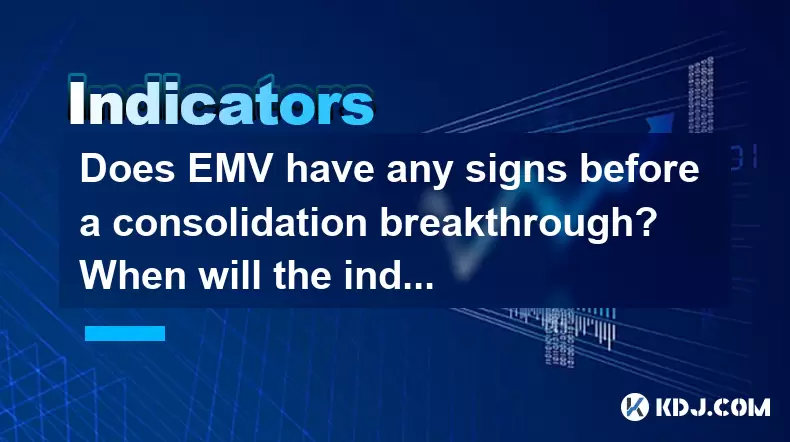
Does EMV have any signs before a consolidation breakthrough? When will the indicator give an early warning?
May 23,2025 at 06:42pm
Does EMV have any signs before a consolidation breakthrough? When will the indicator give an early warning? The Ease of Movement Value (EMV) is a technical indicator that helps traders understand the relationship between price and volume in the cryptocurrency market. It is particularly useful for identifying potential breakouts from consolidation period...
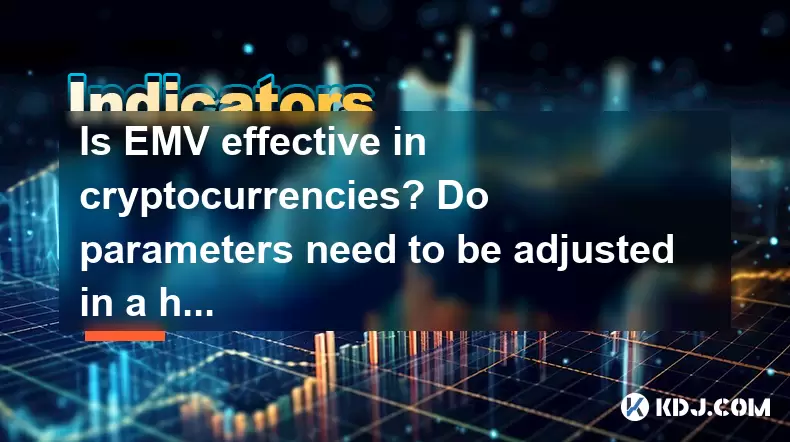
Is EMV effective in cryptocurrencies? Do parameters need to be adjusted in a high volatility environment?
May 24,2025 at 01:49am
Is EMV effective in cryptocurrencies? Do parameters need to be adjusted in a high volatility environment? EMV, or Ease of Movement Value, is a technical indicator that measures the relationship between price changes and volume. Originally developed for traditional financial markets, its application in the cryptocurrency space raises several questions ab...
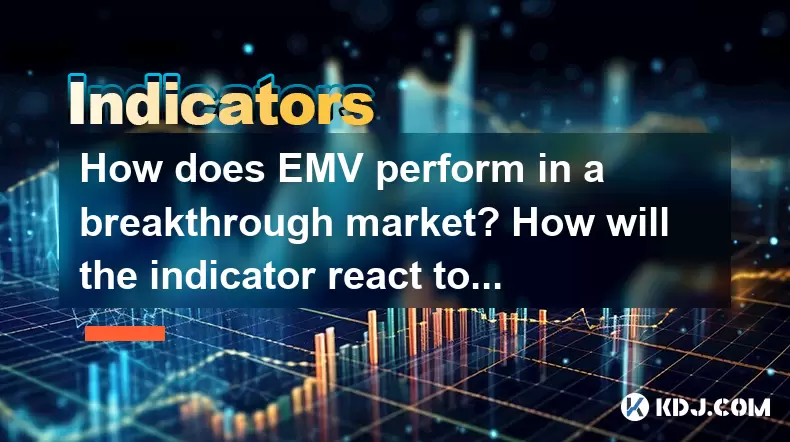
How does EMV perform in a breakthrough market? How will the indicator react to a false breakthrough?
May 23,2025 at 06:01pm
Introduction to EMV IndicatorThe Ease of Movement Value (EMV) indicator is a technical analysis tool that helps traders identify the relationship between price and volume in the cryptocurrency market. Developed by Richard W. Arms, Jr., the EMV indicator aims to measure the 'ease' with which prices move. In a breakthrough market, understanding how EMV pe...
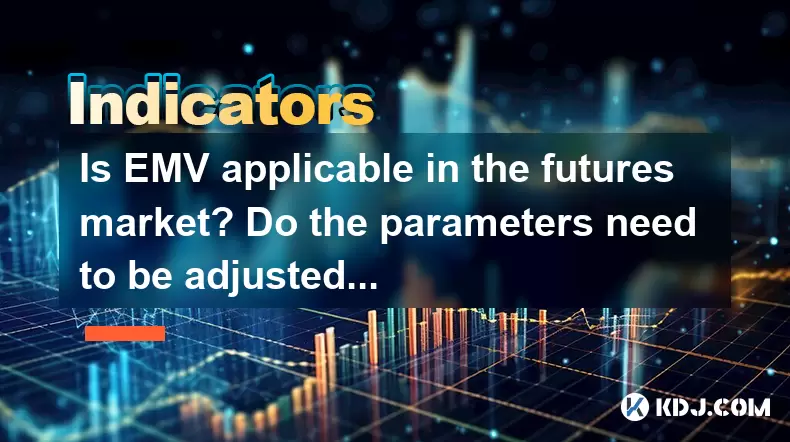
Is EMV applicable in the futures market? Do the parameters need to be adjusted in a leveraged environment?
May 23,2025 at 05:15pm
The application of Exponential Moving Average (EMV) in the futures market, particularly within a leveraged environment, is a topic that garners significant interest among traders. EMV, a type of moving average that places greater weight on recent price data, can be a useful tool for traders in the futures market. However, its effectiveness and the neces...
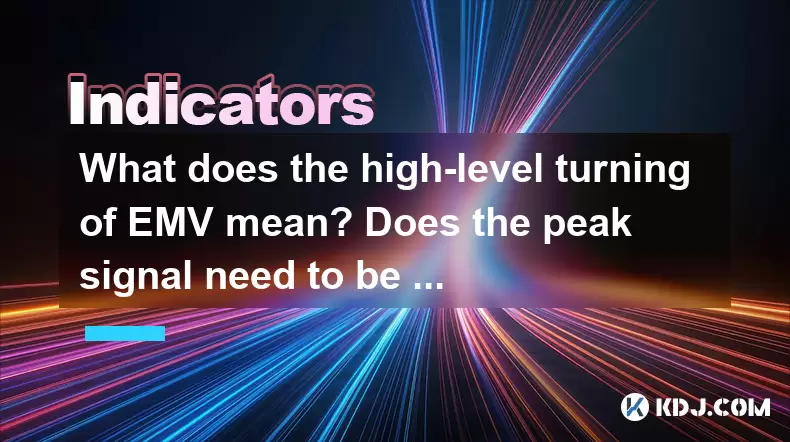
What does the high-level turning of EMV mean? Does the peak signal need to be confirmed by other indicators?
May 23,2025 at 09:56pm
Understanding the High-Level Turning of EMVThe Easing of Market Volatility (EMV) is a crucial metric in the cryptocurrency market, used to gauge the sentiment and potential shifts in market trends. When we talk about the high-level turning of EMV, we refer to a significant change in this metric, indicating a shift from high volatility to lower volatilit...

How to use EMV when the stock price rises continuously? How to avoid misjudgment in extreme market conditions?
May 23,2025 at 07:29pm
In the dynamic world of cryptocurrency trading, the Exponential Moving Average (EMA) is a powerful tool that traders use to make informed decisions, especially during periods of continuous stock price rises. Understanding how to effectively use EMAs and avoiding misjudgment in extreme market conditions are crucial skills for any crypto trader. This arti...

Does EMV have any signs before a consolidation breakthrough? When will the indicator give an early warning?
May 23,2025 at 06:42pm
Does EMV have any signs before a consolidation breakthrough? When will the indicator give an early warning? The Ease of Movement Value (EMV) is a technical indicator that helps traders understand the relationship between price and volume in the cryptocurrency market. It is particularly useful for identifying potential breakouts from consolidation period...

Is EMV effective in cryptocurrencies? Do parameters need to be adjusted in a high volatility environment?
May 24,2025 at 01:49am
Is EMV effective in cryptocurrencies? Do parameters need to be adjusted in a high volatility environment? EMV, or Ease of Movement Value, is a technical indicator that measures the relationship between price changes and volume. Originally developed for traditional financial markets, its application in the cryptocurrency space raises several questions ab...

How does EMV perform in a breakthrough market? How will the indicator react to a false breakthrough?
May 23,2025 at 06:01pm
Introduction to EMV IndicatorThe Ease of Movement Value (EMV) indicator is a technical analysis tool that helps traders identify the relationship between price and volume in the cryptocurrency market. Developed by Richard W. Arms, Jr., the EMV indicator aims to measure the 'ease' with which prices move. In a breakthrough market, understanding how EMV pe...

Is EMV applicable in the futures market? Do the parameters need to be adjusted in a leveraged environment?
May 23,2025 at 05:15pm
The application of Exponential Moving Average (EMV) in the futures market, particularly within a leveraged environment, is a topic that garners significant interest among traders. EMV, a type of moving average that places greater weight on recent price data, can be a useful tool for traders in the futures market. However, its effectiveness and the neces...

What does the high-level turning of EMV mean? Does the peak signal need to be confirmed by other indicators?
May 23,2025 at 09:56pm
Understanding the High-Level Turning of EMVThe Easing of Market Volatility (EMV) is a crucial metric in the cryptocurrency market, used to gauge the sentiment and potential shifts in market trends. When we talk about the high-level turning of EMV, we refer to a significant change in this metric, indicating a shift from high volatility to lower volatilit...
See all articles
























































































